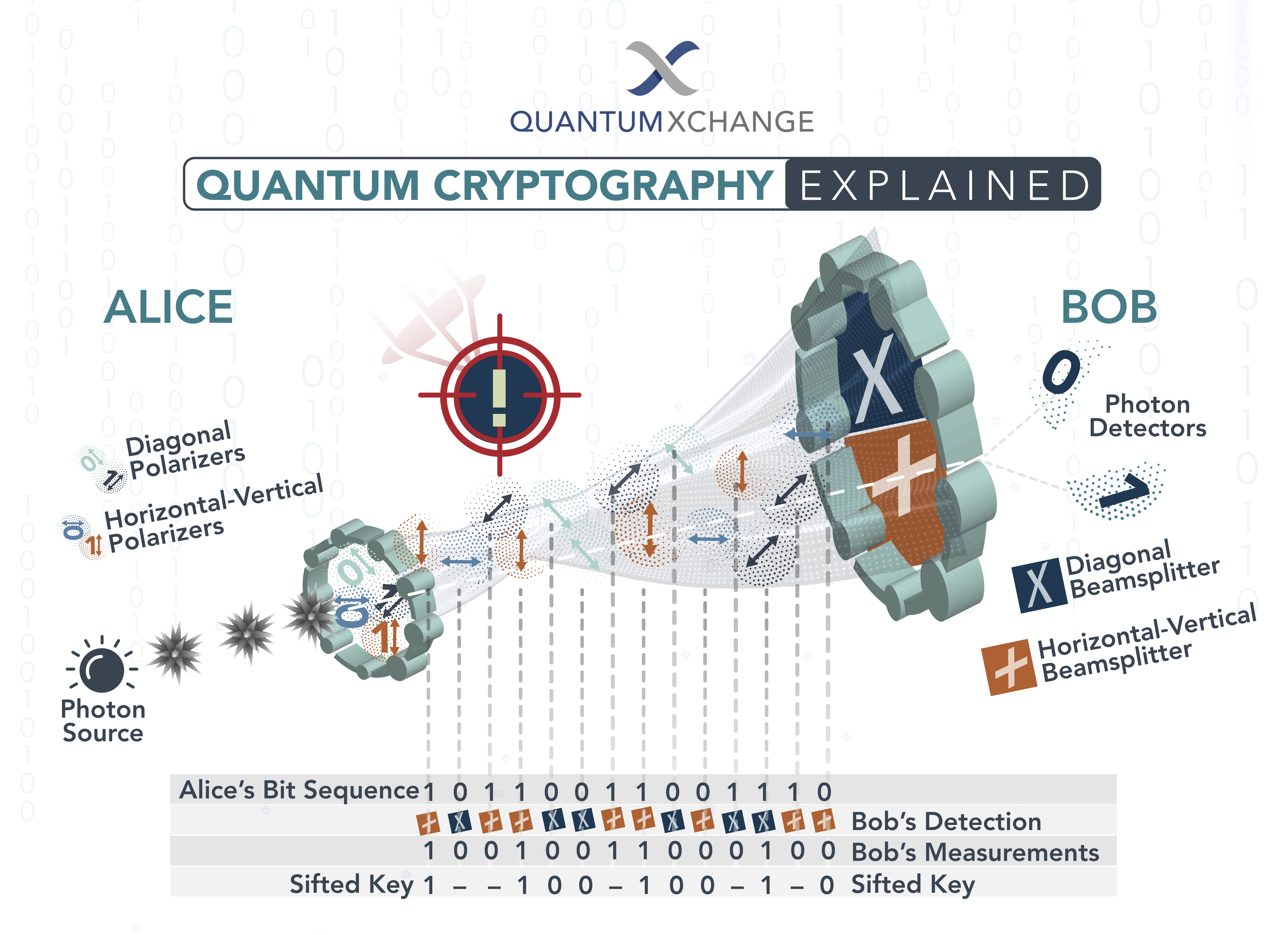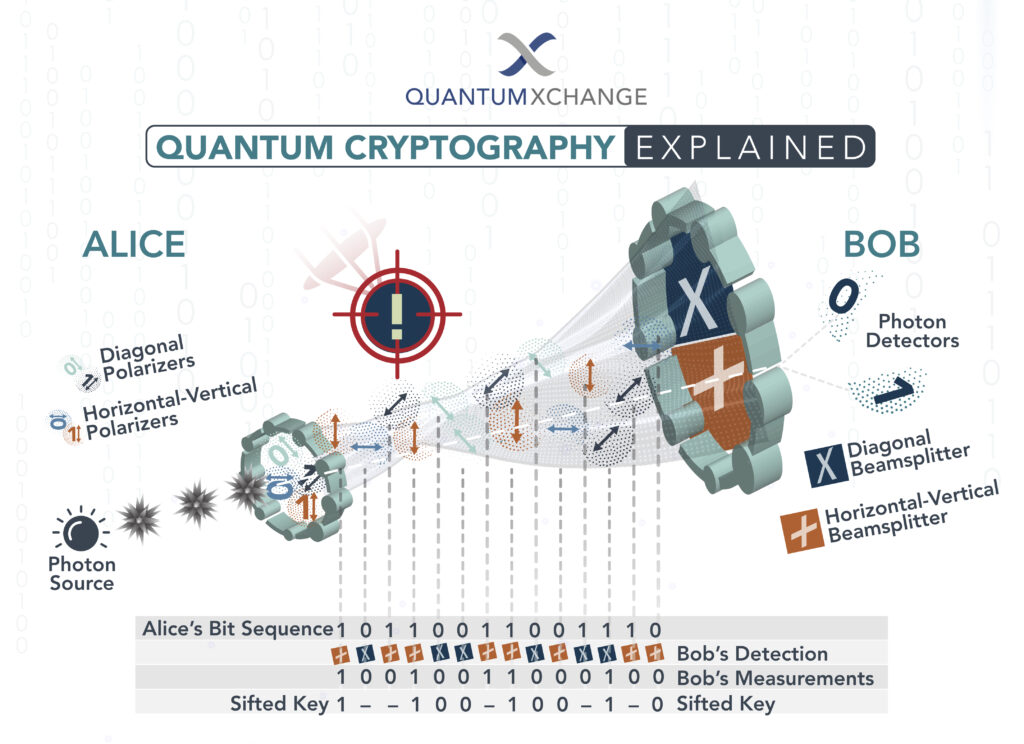Quantum cryptography is a cutting edge field of study that has made significant strides in the last few decades. It is a form of cryptography that relies on the principles of quantum mechanics to encrypt and decrypt data. While traditional methods of cryptography have been proven to be vulnerable to hacking, quantum cryptography offers a more secure way of transmitting information. One of the main goals of quantum cryptography is to ensure that data can be transmitted securely over long distances without the risk of being intercepted by hackers.
The security of data transmission is paramount in today’s world, where everything from financial transactions to personal information is transmitted over the internet. Quantum cryptography uses the principles of quantum mechanics to create cryptographic keys that are impossible to duplicate or hack. These keys can be used to encrypt messages and data, ensuring that they can only be accessed by the intended recipient. With the use of quantum cryptography, it is possible to create a truly secure communication channel that is immune to hacking and interception. This is why one of the main goals of quantum cryptography is to make the transmission of sensitive information as secure as possible.

What is Quantum Cryptography?
Quantum cryptography is a form of encryption that uses the principles of quantum mechanics to securely transmit information. It utilizes the properties of quantum mechanical particles such as photons, to create an unbreakable code. By using the laws of quantum mechanics, quantum cryptography can protect data from being intercepted and deciphered by any third party.
What is the Main Goal of Quantum Cryptography?
The main goal of quantum cryptography is to provide secure communication between two parties. It uses the principles of quantum mechanics to encrypt data, making it impossible for a third party to access. Quantum cryptography is different from traditional encryption methods as it relies on the laws of quantum mechanics instead of traditional algorithms. This makes it much more secure and difficult to intercept.
Quantum Key Distribution
One of the main goals of quantum cryptography is quantum key distribution (QKD). QKD is a secure communication method that enables two parties to exchange a secret key without the possibility of it being intercepted by a third party. This is done by using the properties of quantum mechanics, such as entanglement and superposition. With QKD, the two parties can securely exchange data without the risk of interception.
Security of Data
Another goal of quantum cryptography is to ensure the security of data. Traditional encryption methods can be easily broken if a third party is able to gain access to the data. However, quantum cryptography uses the laws of quantum mechanics to create an unbreakable code. This ensures that the data is secure and cannot be accessed by any third party. Additionally, quantum cryptography also ensures that the data is not altered during transmission, making it even more secure.
Improved Efficiency
Another goal of quantum cryptography is to improve the efficiency of communication. Traditional encryption methods require large amounts of time and resources to encode and decode data. However, quantum cryptography can significantly reduce the amount of time and resources needed to securely transmit data. This makes it much more efficient and cost-effective than traditional methods.
Real-Time Security
Finally, another goal of quantum cryptography is to provide real-time security. Traditional encryption methods require a certain amount of time to encode and decode data, making it difficult to securely transmit data in real-time. However, quantum cryptography can provide real-time security, allowing for secure communication in real-time. This makes it ideal for applications such as banking, where data needs to be securely transmitted in real-time.
Frequently Asked Questions About Quantum Cryptography
Quantum cryptography is a growing field of study that enables secure communication through the use of quantum-mechanical properties. It is becoming increasingly important as a means of keeping sensitive information secure in an increasingly digital world.
What is one of the main goals of quantum cryptography?
One of the main goals of quantum cryptography is to provide a secure means of communication between two parties. By using quantum-mechanical properties, quantum cryptography is able to ensure that any transmitted messages are not intercepted or tampered with, providing a much higher level of security than traditional methods. This is especially important for communication between governments, corporations, and other organizations that contain sensitive information.
Another key goal of quantum cryptography is to provide a means of authenticating the identities of the two parties communicating. By using quantum-mechanical properties, quantum cryptography can verify that a message is coming from the intended sender and that it has not been tampered with in any way. This is especially important in the world of digital communications, where it is easy for malicious actors to spoof identities or alter messages. Quantum cryptography can help protect against these threats by verifying the identity of the sender and ensuring that the message has not been tampered with.

What is Quantum Cryptography? An Introduction
In conclusion, the main goal of quantum cryptography is to provide a secure way of transmitting information. This is achieved by utilizing the principles of quantum mechanics to create a cryptographic system that is unbreakable by traditional methods. With quantum cryptography, information can be sent with complete security and privacy, making it an essential tool for governments, corporations, and individuals who need to protect sensitive information.
As quantum computing continues to advance, so too does the need for secure communication. Quantum cryptography offers a promising solution to this challenge, and its potential applications are vast. From financial transactions to military communications, the ability to transmit information securely is becoming increasingly important in today’s world. While quantum cryptography is still a relatively new field, its potential to revolutionize the way we communicate cannot be overstated. As such, it is an area of research that will continue to grow and evolve in the years to come.

